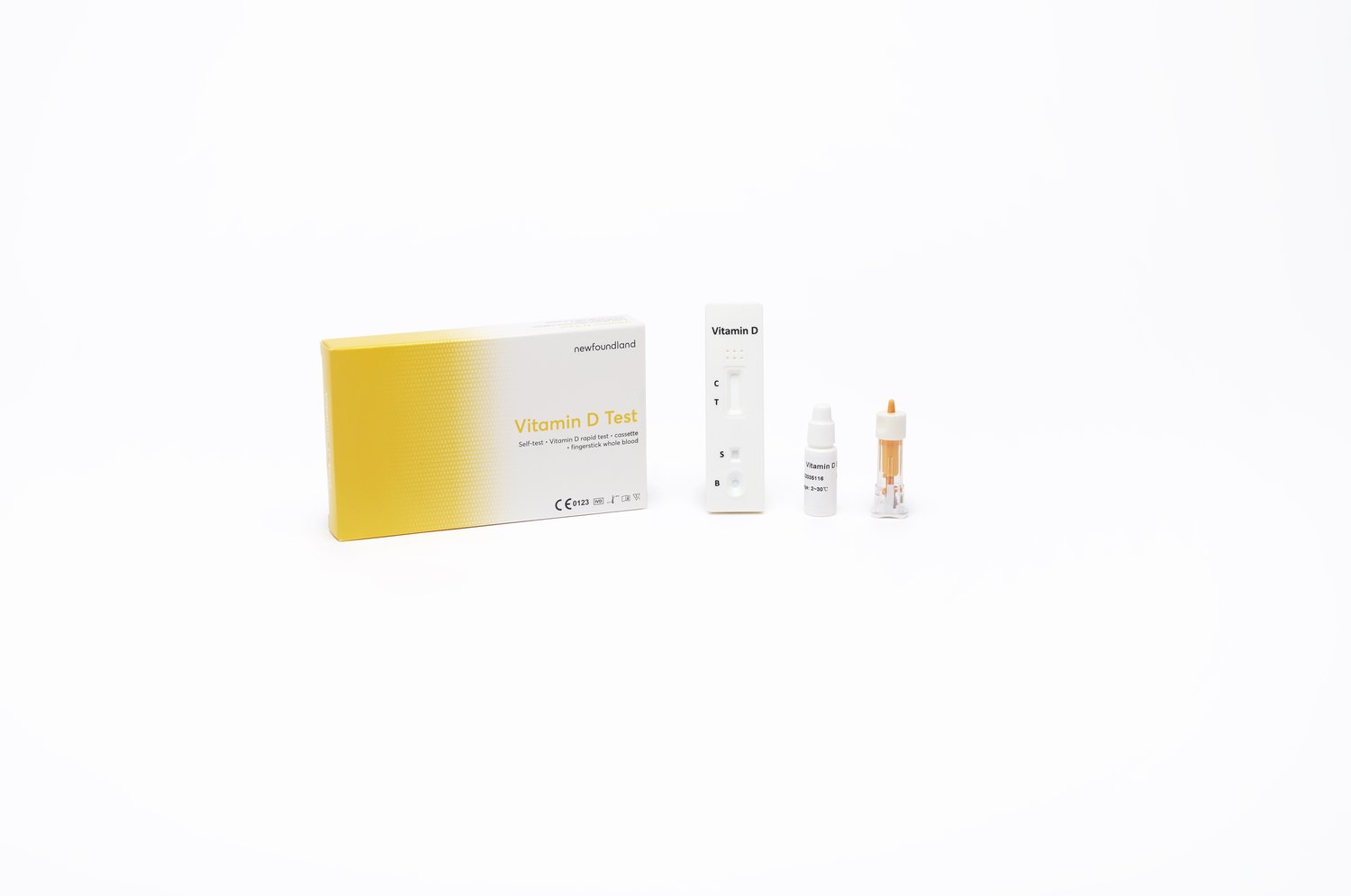Vitamin D
£25.00
A rapid self-test for the detection of 25-hydroxyvitamin D in fingerstick whole blood to identify vitamin D deficiency.
1 test per pack.
The Vitamin D test is an immunoassay based on the principle of competitive binding. During testing,
the specimen migrates upward on the membrane chromatographically by capillary action. The membrane
is pre-coated with 25 (OH) D antigens on the test line region of the strip - the higher
concentration of antigens in the specimen, the lighter would be the T line. The result will be read
according to the colour card provided with the kit. To serve as a procedural control, a coloured
line will always appear in the control line region indicating that proper volume of specimen has
been added and membrane wicking has occurred.
Vitamin D refers to a group of fat-soluble secosteroids responsible for increasing intestinal absorption of calcium, iron, magnesium, phosphate and zinc.
The health risks associated with Vitamin D deficiency are far more severe than previously thought. Vitamin deficiency has been linked to various serious diseases: osteoporosis, osteomalacia, multiple sclerosis, cardiovascular diseases, pregnancy complications, diabetes, depression, strokes, autoimmune diseases, flu, different cancers, infectious diseases, alzheimer, obesity and higher mortality. Vitamin D deficiency is now recognised as a global epidemic. Vitamin D helps regulate calcium and phosphate in the body, which are essential nutrients for keeping bones, teeth and muscles healthy.
Vitamin D refers to a group of fat-soluble secosteroids responsible for increasing intestinal absorption of calcium, iron, magnesium, phosphate and zinc.
The health risks associated with Vitamin D deficiency are far more severe than previously thought. Vitamin deficiency has been linked to various serious diseases: osteoporosis, osteomalacia, multiple sclerosis, cardiovascular diseases, pregnancy complications, diabetes, depression, strokes, autoimmune diseases, flu, different cancers, infectious diseases, alzheimer, obesity and higher mortality. Vitamin D deficiency is now recognised as a global epidemic. Vitamin D helps regulate calcium and phosphate in the body, which are essential nutrients for keeping bones, teeth and muscles healthy.
Procedure
1. Wash your hands with soap and rinse with water.
2. Open the pouch, remove the test cassette and place it on a clean and level surface. Carefully pull off and dispose of the cap of the lancet.
3. Clean your fingertip with the alcohol pad provided.
4. Press the orange end of the lancet against the fingertip. The tip retracts automatically and safely after use.
5. Keeping the hand pointing downwards, massage the end of your finger to obtain a blood drop.
6. Without squeezing the dropper, place it in contact with the blood. The blood migrates into the dropper up to the line indicated. Avoid air bubbles, you may need to massage your finger again if the blood does not reach the line.
7. Put the collected blood into the sample well of the cassette by squeezing the dropper bulb.
8. Wait for the blood to be totally dispensed in the well. Unscrew the cap of the buffer bottle and add 1 drop of buffer into the sample well of the cassette.
9. Wait for the coloured line to appear. Read results at 10 minutes. Compare the T line intensity with the vitamin D colour card provided to determine the vitamin D level in your blood. Do not interpret the result after 20 minutes.
1. Wash your hands with soap and rinse with water.
2. Open the pouch, remove the test cassette and place it on a clean and level surface. Carefully pull off and dispose of the cap of the lancet.
3. Clean your fingertip with the alcohol pad provided.
4. Press the orange end of the lancet against the fingertip. The tip retracts automatically and safely after use.
5. Keeping the hand pointing downwards, massage the end of your finger to obtain a blood drop.
6. Without squeezing the dropper, place it in contact with the blood. The blood migrates into the dropper up to the line indicated. Avoid air bubbles, you may need to massage your finger again if the blood does not reach the line.
7. Put the collected blood into the sample well of the cassette by squeezing the dropper bulb.
8. Wait for the blood to be totally dispensed in the well. Unscrew the cap of the buffer bottle and add 1 drop of buffer into the sample well of the cassette.
9. Wait for the coloured line to appear. Read results at 10 minutes. Compare the T line intensity with the vitamin D colour card provided to determine the vitamin D level in your blood. Do not interpret the result after 20 minutes.
Read results at 10 minutes. Compare the T line intensity with ?vitamin D colour card? provided with
the kit to get the Vitamin D level in your blood. Do not interpret the result after 20 minutes.











